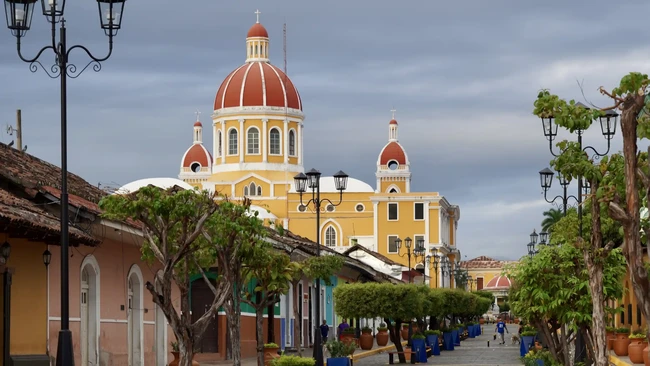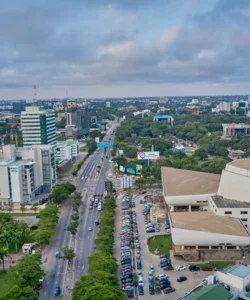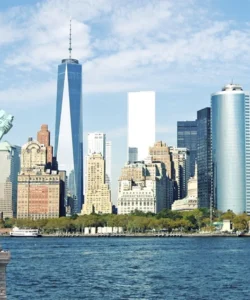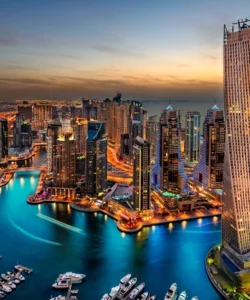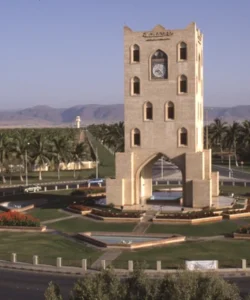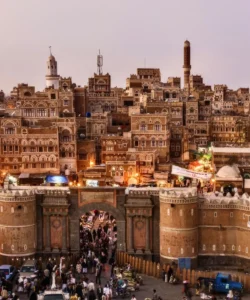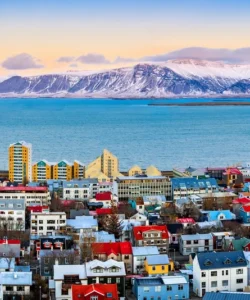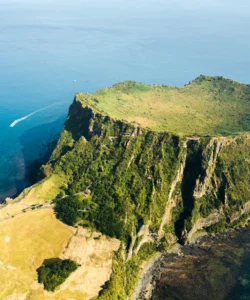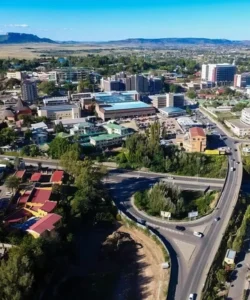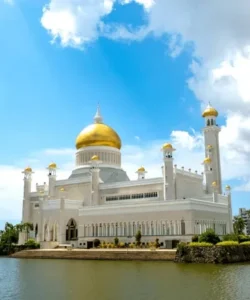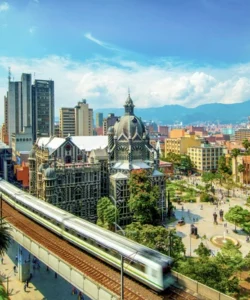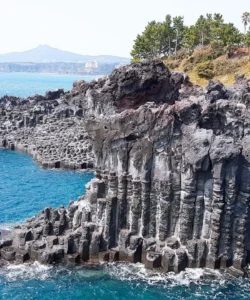Nicaragua is the largest country in Central America, located between the Pacific Ocean and the Caribbean Sea. It’s known as the “Land of Lakes and Volcanoes” for its dramatic volcanic landscapes, large freshwater lakes, rich colonial history, and vibrant culture.
![]()
Area and Population:
Nicaragua covers an area of approximately 130,373 km² (50,337 sq mi). Its population is estimated to be around 7.2 million inhabitants (as of 2024).
Language:
The official language of Nicaragua is Spanish. English is spoken on the Caribbean coast, especially by the Miskito, Creole, and Rama indigenous communities. Various indigenous languages, such as Miskito and Mayangna, are also spoken.
Currency:
The currency of Nicaragua is the Nicaraguan Córdoba (NIO). U.S. dollars are widely accepted in many tourist areas and for larger transactions.
Religion:
The predominant religion in Nicaragua is Christianity, with Catholicism being the largest denomination, a legacy of Spanish colonization. Protestantism, particularly Evangelical and Pentecostal denominations, has experienced significant growth and now accounts for a large portion of the population.
Capital:
The capital city of Nicaragua is Managua, located on the southwestern shore of Lake Managua. It is the country’s largest city and its political, economic, and cultural center. Much of the old city was destroyed by earthquakes, leading to a more sprawling, modern layout.
Major Cities:
Besides Managua, other significant cities and towns in Nicaragua include:
- Granada: A beautifully preserved colonial city on the shores of Lake Nicaragua, known for its vibrant architecture, charming plazas, and relaxed atmosphere.
- León: Another significant colonial city, known for its rich revolutionary history, impressive cathedral, and vibrant intellectual and artistic scene.
- Masaya: A city known for its active volcano and bustling artisan market.
- San Juan del Sur: A popular Pacific coastal town, particularly known for surfing and lively nightlife.
- Estelí: A city in the northern highlands, known for its tobacco and coffee production.
- Bluefields: The main city on the Caribbean coast, reflecting the region’s Afro-Caribbean culture.
Attractions and Wonders:
Nicaragua offers a diverse range of attractions, from volcanic adventures to colonial charm and Caribbean island getaways.
- Colonial Cities (Granada & León):
- Granada: Wander its colorful streets, visit the Central Park, La Merced Church, and take a boat tour on Lake Nicaragua to explore its “Isletas” (small islands).
- León: Explore its impressive Cathedral Basilica of the Assumption of the Blessed Virgin Mary (a UNESCO World Heritage site), climb to its rooftop for views, visit the Ortiz-Guardian Art Center, and learn about its revolutionary history.
- Volcanoes: Nicaragua is part of the Pacific Ring of Fire.
- Cerro Negro: An active volcano famous for volcano boarding (sliding down its ash-covered slopes).
- Masaya Volcano National Park: One of the most active volcanoes in Nicaragua, allowing visitors to view its glowing lava lake at night.
- Mombacho Volcano Natural Reserve: A cloud forest volcano near Granada, offering hiking trails, zip-lining, and coffee tours.
- Concepción and Maderas Volcanoes (Ometepe Island): Two majestic volcanoes forming Ometepe Island in Lake Nicaragua.
- Ometepe Island: A unique, figure-eight shaped island formed by two volcanoes in Lake Nicaragua. It’s a paradise for hiking, kayaking, cycling, and exploring waterfalls and petroglyphs.
- Corn Islands (Little Corn Island & Big Corn Island): Laid-back, idyllic Caribbean islands off the coast, known for their white-sand beaches, clear turquoise waters, excellent snorkeling, diving, and relaxed Afro-Caribbean culture.
- San Juan del Sur: A popular Pacific beach town for surfing (Playa Maderas, Playa Gigante), relaxing, and enjoying the sunset.
- Apoyo Lagoon Natural Reserve: A beautiful, clear crater lake near Granada, perfect for swimming, kayaking, and relaxing.
- Reserva Natural Miraflor-Moropotente: In the northern highlands near Estelí, known for its cloud forests, coffee plantations, and rural community tourism.
- Islets of Granada (Isletas de Granada): Hundreds of small islands formed by a volcanic eruption in Lake Nicaragua, many with homes, hotels, and wildlife, explored by boat.
- Miraflor Natural Reserve: A unique reserve known for its waterfalls, coffee farms, and rural community tourism.
Architecture:
Nicaraguan architecture largely reflects its Spanish colonial heritage, particularly in its well-preserved cities.
- Colonial Architecture: Most prominent in Granada and León, featuring colorful facades, ornate churches (especially León Cathedral), central courtyards, and charming plazas, adapted to the region’s seismic activity with lower, sturdier constructions.
- Republican and Neoclassical: Some public buildings from the late 19th and early 20th centuries show European influences.
- Modern Urban Design: Managua’s architecture is more spread out and modern due to repeated earthquake damage, with newer commercial and government buildings.
Roads:
Nicaragua has a developing road network. Major highways connecting key cities and tourist destinations (such as the Pan-American Highway) are generally paved and in decent condition. However, many secondary roads, especially those leading to rural areas, natural reserves, or some coastal towns, can be unpaved, gravel, or dirt, and may become challenging, particularly during the rainy season. Public bus transportation is extensive and affordable, a common way for locals and tourists to travel.
Hotels:
Nicaragua offers a range of accommodation options. In colonial cities like Granada and León, you’ll find charming boutique hotels in renovated colonial buildings, as well as guesthouses and hostels. In Managua, there are international chain hotels and business-oriented accommodations. Along the Pacific coast and on Ometepe and the Corn Islands, options include surf lodges, eco-lodges, beachfront hotels, and more rustic cabanas.
Restaurants and Cuisine:
Nicaraguan cuisine is hearty, flavorful, and primarily based on corn, beans, rice, and local meats and seafood. It’s generally not spicy.
- Key Dishes:
- Gallo Pinto: The national dish, a flavorful mix of rice and red beans, often served for breakfast with eggs, cheese, and fried plantains.
- Nacatamal: A large, hearty tamale made from corn dough filled with pork or chicken, rice, potatoes, vegetables, and sometimes mint, wrapped in plantain leaves and steamed. A traditional weekend breakfast.
- Vigorón: A street food specialty, consisting of boiled yuca (cassava), chicharrón (fried pork rinds), and a cabbage salad (curtido) served on a plantain leaf.
- Indio Viejo: A thick, flavorful beef stew made with shredded beef, corn dough, and various vegetables.
- Fritanga: Various grilled or fried meats (beef, chicken, pork) served with gallo pinto, fried plantains, and salad, often found at street stalls.
- Quesillo: A popular snack featuring a thick tortilla with cheese, pickled onions, and cream, wrapped in aasa plantain leaves.
- Sopa de Mondongo: A traditional tripe soup.
- Maduro Frito / Tajadas: Fried sweet or green plantains, served as a side dish.
- Fresh Fruit and Juices: Abundant tropical fruits like mango, papaya, pineapple, and passion fruit.
- Restaurants: Granada and León offer a good variety of restaurants, from traditional Nicaraguan eateries to international cuisine. Managua has a wider range of upscale and fast-food options. In smaller towns and along the coast, local comedores and street vendors offer authentic and affordable meals.
